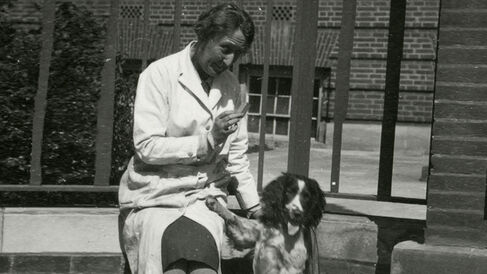Needham, Sanger and Stephenson

With a prescience remarkable even by his standards, back in the 1920s Hopkins had persuaded a young student to give up medicine to work in biochemistry. The student was Joseph Needham and by 1931 he had published his three-volume work Chemical Embryology. In 1924 Needham married Dorothy Moyle, who had been recruited by Hopkins in 1919 to work on muscle biochemistry and substrate-level phosphorylation. As Moyle was elected a Fellow of the Royal Society in 1948, they became the first husband and wife to be so honoured, Needham having been elected in 1941. When three Chinese scientists came to work in the Department in 1937 and he fell in love with one of them, Lu Gwei-djen, it prompted Needham to master Classical Chinese to the extent that from 1942 to 1946 he was Director of the Sino-British Science Cooperation Office in Chongqing. Needham essentially devoted the rest of his life to revealing the history of Chinese science in all its aspects, which he complied in the 27 volumes of Science and Civilisation in China.
In 1940 Frederick Sanger joined the Department on a Beit Memorial Fellowship. He won the 1958 Nobel Prize in Chemistry for obtaining the first sequence of a protein and, after moving to the MRC Laboratory of Molecular Biology, shared the 1980 Nobel Prize in Chemistry with Walter Gilbert for nucleic acid sequencing.
The plant biochemist Albert Charles Chibnall, who had worked in Jack Cecil Drummond's University College London laboratory, succeeded Hopkins as Sir William Dunn Professor in 1943.
In 1945 Marjory Stephenson became the first female Fellow of the Royal Society for her work on bacterial oxidation, at the same time as the X-ray crystallographer Kathleen Lonsdale. Stephenson's work on microbial metabolism was continued by Ernest Frederick Gale who became Professor of Chemical Microbiology in 1960 and remained a member of the Department until his retirement in 1981.
